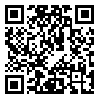Volume 4, Issue 4 (2013)
LRR 2013, 4(4): 245-265 |
Back to browse issues page
Associate Professor, Department of Linguistics, Bu-Ali Sina University, Hamadan, Iran
Abstract: (8663 Views)
Different methods are used Cross-linguistically to code coordination relations. It may be the case that two clauses are simply juxtaposed. Here, their relations are inferred through the context of communication and their semantic properties. The alternative and more marked method is the presence of an overt coordinating marker, or connective. Both of these constructions occur in Persian Language. In this article, major coordinating relations of conjunction, disjunction and adversativity are touched upon; however, the main emphasis is put on adversatives and their development. In this connection, a rather long list of modern Persian adversatives identified is presented. On the basis of their internal structure, Persian adversatives can be classified as simple, compound and discontinuous words. In some cases, even a sentence functions as an adversative. These morphologically different adversatives derive from different grammatical and lexical sources. Like many languages, words with spatial, temporal, causal and emphatic meaning have been grammaticalized to function as adversatives. In addition, one can find sources that are almost rare in languages of the world. Among these, one can trace the development of some word-forms of the lexical verbs of goftan ‘say’, and kardan ‘do’ to adversatives. Furthermore, in the formation of some compound adversatives, question words as well as grammatical words denoting condition are used.
| Rights and permissions | |
 |
This work is licensed under a Creative Commons Attribution-NonCommercial 4.0 International License. |

